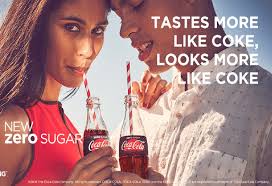What is the simplest way to increase likes and followers? Face!
- Kuba Gołębiowski

- Feb 13
- 5 min read

What engages our brains the most? Infographics, text, or maybe... faces? Or is it all the same thing?
From this article, you will learn:
🔹 Why faces have powerful advertising potential
🔹 Is a face more powerful than a logo?
🔹 How to translate this knowledge into professional success
🔹 Future predictions
🔹 For the curious: how to present data with Chernoff faces
🔹 Why do faces have powerful advertising potential?
It seems that in the current development of civilization, nothing is permanent. Old professions disappear, new ones appear, and those who stop following technology quickly fall behind. However, one thing has remained unchanged since prehistoric times — our brains. Evolution has long since stopped keeping up with us, and despite using smartphones, we still have the same cognitive mechanisms as our spear-wielding ancestors.
We are cavemen with internet access. Many of our reactions and decisions are based on behaviors that were necessary for survival thousands of years ago. Back then, humans lived in a dangerous environment, and those who hesitated instead of acting could end up, for example, being eaten by a bird. Although instinctive actions in the 21st century are less crucial for survival, they still drive most human behavior. This means that the same things that interested early humans still engage us today.
What was the ancient Facebook? One of the primary sources of information for our ancestors was faces. Their expressions conveyed emotions and intentions long before the first words were spoken. Every element of facial expressions carries enormous amounts of information, automatically engaging our brains. From a face, we can determine emotions, opinions, health status, and even sexual orientation. Michał Kosiński from Stanford University developed an algorithm that could identify sexual orientation from a photograph with an 81% accuracy rate—better than human observers, who had a 61% success rate.
This leads to one conclusion: faces simply "click" well and are memorable. The Georgia Institute of Technology, in collaboration with Yahoo Labs, analyzed over 1,100,000 Instagram photos in terms of engagement. They found that posts featuring human faces received 38% more likes and 32% more comments, regardless of context. This means that removing the human element from your brand promotion automatically cuts off a large portion of potential audience engagement.
🔹 Is a face more powerful than a logo?

Every face is unique, just like fingerprints. This means that each of us is born with a distinctive identity that others interpret throughout our lives. Our face is essentially our personal, engaging "logo." Additionally, it is easily memorable—each of us can recognize around 5,000 faces effortlessly.
Think about the people you recognize from the media versus those you know personally. You likely remember a set of associated information for each face. Incredible, isn't it?
Now, consider whether you struggle to associate certain people with their respective brands. Probably not. In many cases, it’s even easier to recall the CEO’s face than a company's logo.
🔹 How to translate this knowledge into marketing success?
▪️Focus on people in all advertising efforts, adding logos as a secondary element. Coca-Cola has been doing this effectively for years.
▪️If you're building a personal brand, practice facial expressions. They can give you more credibility than even the most solid expertise. Acting techniques or simply recording and analyzing your expressions can be helpful. As Chekhov said, "Everything in a person should be beautiful: the face, the clothes, the soul, and the thoughts."
▪️Get comfortable with video and public appearances. It's hard to build a brand—personal or corporate—without them.
🔹 Future predictions
Unfortunately, the effectiveness of faces in marketing will only increase. Why "unfortunately"? Because the root causes of this trend are rather troubling.
Humans are social animals, and our brains are designed for group living. Our close relatives, chimpanzees, spend 20-40% of their day in social interactions—grooming, playing, foraging, forming alliances, and resolving conflicts. If they could, they would likely spend even more time this way, but they must dedicate the rest of their day to physiological needs: resting, finding food, and sleeping.
However, due to technological advancements and social media, our brains are being deprived of these interactions, leading to an epidemic of loneliness:
In 2023, an Electronics Hub report found that the global average screen time was 6 hours and 37 minutes per day.
Gen Z spends an average of 109 days per year looking at screens.
80% of our day is spent consuming information—a 40% increase since 1980.
We see 208 ads per hour—10 times more than our parents did at our age.
12% of Americans report having no close friends, and half say they struggle with loneliness. Even those with friends spend 70% less time with them than they did a decade ago.
Our brains are hungrier than ever for real human relationships, and they seek social fulfillment online. On YouTube, the most engaging videos often feature thumbnails with exaggerated human faces.
The most popular online personalities are those who offer "pseudo-relationships," positioning themselves as "pseudo-friends." This phenomenon is intensifying, making faces the new brand identity.
It may sound mechanical or even unsettling, but marketing must adapt to social changes to remain effective.
That said, I strongly encourage maintaining as many real-life relationships with genuine people as possible. Who knows? Maybe in a few years, prioritizing real interactions will become a new trend.
🔹 For the curious: How to present data with Chernoff faces
Pareidolia is the tendency to perceive faces in random objects. This explains famous illusions like the "Face on Mars" or why clocks in advertisements often display 10:10—it creates a smiling appearance that evokes positive emotions in customers.
In 1971, Herman Chernoff introduced the concept of Chernoff faces, a method of visualizing data using stylized facial features. In these representations, different elements—such as the shape and size of eyes, ears, and eyebrows—correspond to various data points. Chernoff found that our brains are so accustomed to processing faces that this method makes data easier to interpret than traditional graphs.
For example, a study using Chernoff faces to visualize U.S. crime data from 1960-2009 showed:
Face size represents the number of violent crimes.
Face shape represents the number of robberies.
Mouth size represents the number of murders.
Eyebrow curve represents the rate of aggravated assaults.
Eye size represents the frequency of rapes.
Hair size represents property crime levels.
Hairstyle represents the number of vehicle thefts.
Nose size represents the rate of thefts.
Ear size represents the number of burglaries.
By using Chernoff faces, we can leverage our brain’s natural ability to process facial expressions to better understand complex data sets.
Artykuł napisał:
Kuba Gołębiowski | CEO & Marketing Specialist w Rek House

Główny specjalista od marketingu w Rek House i prezes firmy. Odpowiada za koncepcję, dobór narzędzi marketingowych i zarządzanie firmą.
Doświadczony w budowaniu i zarządzaniu zespołami zajmującymi się budowaniem marki, marketingiem internetowym, eventami, produkcją filmową i stronami internetowymi.
Współpracował z takimi markami jak Artis Wellness Club, Edunation, Enea, Kwiat Jabłoni, Korporacja KGL, Motel One, Perfect Gym, Primark, Warsaw Security Forum. Oprócz pracy z dużymi markami uwielbia budować nowe od podstaw.
Pasjonat nauki, historii, żeglarstwa, muzyki i ekonomii behawioralnej.
Więcej informacji o Kubie znajdziesz klikając tutaj.















Comments